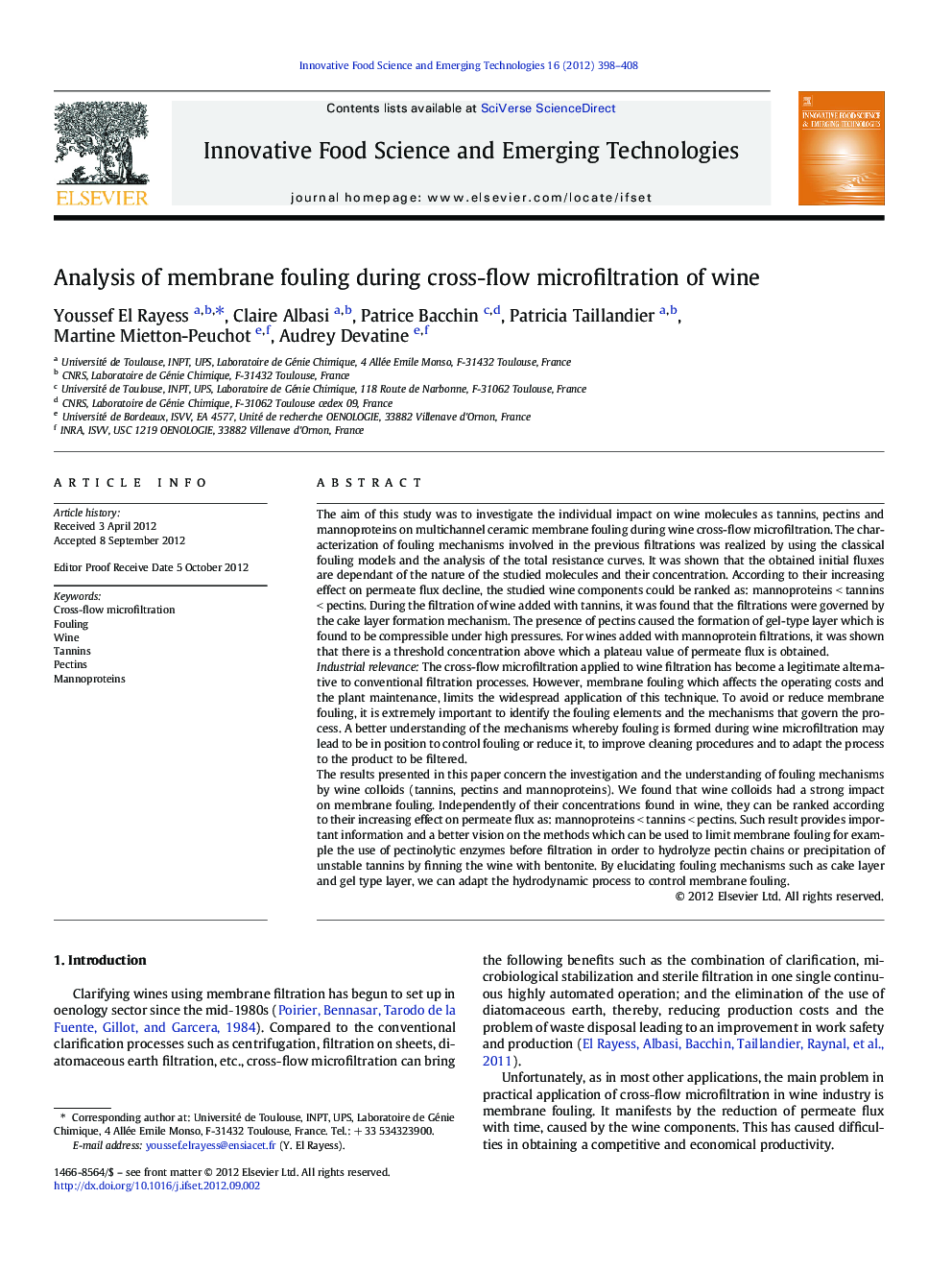| کد مقاله | کد نشریه | سال انتشار | مقاله انگلیسی | نسخه تمام متن |
|---|---|---|---|---|
| 2087183 | 1545550 | 2012 | 11 صفحه PDF | دانلود رایگان |

The aim of this study was to investigate the individual impact on wine molecules as tannins, pectins and mannoproteins on multichannel ceramic membrane fouling during wine cross-flow microfiltration. The characterization of fouling mechanisms involved in the previous filtrations was realized by using the classical fouling models and the analysis of the total resistance curves. It was shown that the obtained initial fluxes are dependant of the nature of the studied molecules and their concentration. According to their increasing effect on permeate flux decline, the studied wine components could be ranked as: mannoproteins < tannins < pectins. During the filtration of wine added with tannins, it was found that the filtrations were governed by the cake layer formation mechanism. The presence of pectins caused the formation of gel-type layer which is found to be compressible under high pressures. For wines added with mannoprotein filtrations, it was shown that there is a threshold concentration above which a plateau value of permeate flux is obtained.Industrial relevanceThe cross-flow microfiltration applied to wine filtration has become a legitimate alternative to conventional filtration processes. However, membrane fouling which affects the operating costs and the plant maintenance, limits the widespread application of this technique. To avoid or reduce membrane fouling, it is extremely important to identify the fouling elements and the mechanisms that govern the process. A better understanding of the mechanisms whereby fouling is formed during wine microfiltration may lead to be in position to control fouling or reduce it, to improve cleaning procedures and to adapt the process to the product to be filtered.The results presented in this paper concern the investigation and the understanding of fouling mechanisms by wine colloids (tannins, pectins and mannoproteins). We found that wine colloids had a strong impact on membrane fouling. Independently of their concentrations found in wine, they can be ranked according to their increasing effect on permeate flux as: mannoproteins < tannins < pectins. Such result provides important information and a better vision on the methods which can be used to limit membrane fouling for example the use of pectinolytic enzymes before filtration in order to hydrolyze pectin chains or precipitation of unstable tannins by finning the wine with bentonite. By elucidating fouling mechanisms such as cake layer and gel type layer, we can adapt the hydrodynamic process to control membrane fouling.
► Analysis of membrane fouling by wine compounds during cross-flow microfiltration
► Characterization of fouling mechanisms by using the classical fouling models
► A cake layer formation is found while filtering wines added with tannins.
► Formation of a gel-type layer caused by the presence of pectins
► Coexistence of different fouling mechanisms in the presence of mannoproteins
Journal: Innovative Food Science & Emerging Technologies - Volume 16, October 2012, Pages 398–408